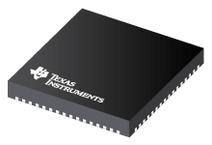The Texas Instruments CC430 family of ultralow-power microcontroller system-on-chip with integrated RF transceiver cores consists of several devices featuring different sets of peripherals targeted for a wide range of applications. The architecture, combined with seven low-power modes (including LPM3.5 and LMP4.5), is optimized to achieve extended battery life in portable measurement applications. The device features the powerful MSP430™ 16-bit RISC CPU, 16-bit registers, and constant generators that contribute to maximum code efficiency.
●The CC430 family provides a tight integration between the microcontroller core, its peripherals, software, and the RF transceiver, making these true system-on-chip solutions easy to use as well as improving performance.
●The CC430F614x series are microcontroller system-on-chip configurations combining the excellent performance of the state-of-the-art CC1101 sub-1-GHz RF transceiver with the MSP430 CPUXV2, up to 32 kB of in-system programmable flash memory, up to 4 kB of RAM, two 16-bit timers, a high-performance 10-bit A/D converter with eight external inputs plus internal temperature and battery sensors, comparator, universal serial communication interfaces (USCIs), 128-bit AES security accelerator, hardware multiplier, DMA, real-time clock module with alarm capabilities, LCD driver, and up to 44 I/O pins.
●The CC430F514x and CC430F512x series are microcontroller system-on-chip configurations combining the excellent performance of the state-of-the-art CC1101 sub-1-GHz RF transceiver with the MSP430 CPUXV2, up to 32 kB of in-system programmable flash memory, up to 4 kB of RAM, two 16-bit timers, a high performance 10-bit A/D converter with six external inputs plus internal temperature and battery sensors on CC430F514x devices, comparator, universal serial communication interfaces (USCI), 128-bit AES security accelerator, hardware multiplier, DMA, real-time clock module with alarm capabilities, and up to 30 I/O pins.
●Typical applications for these devices include wireless analog and digital sensor systems, heat cost allocators, thermostats, metering (AMR, AMI), smart grid wireless networks, etc.


